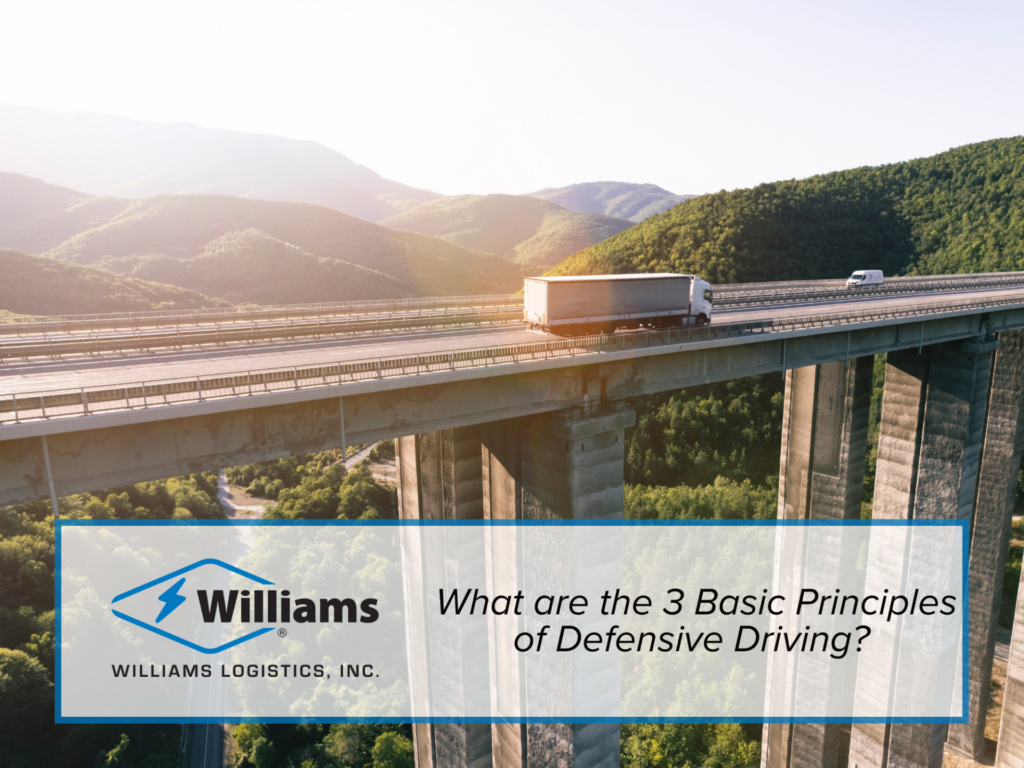What is Defensive Driving?
Summer travel is always full of challenges and defensive driving is crucial to staying safe while traveling. So what is defensive driving? Defensive driving is being prepared to react safely and calmly to situations that arise such as:
-
- The actions of other drivers
- Road damage or construction lanes
- Encountering road debris or wild animals
- Developing weather conditions
- And other potential hazards that can affect your driving
Being a defensive driver allows you to react calmly to other drivers actions when they behave differently than what you would expect them to (yield at intersections, stay in the same lane, ect). It’s always best to question if the other driver could be intoxicated, distracted, or reckless than to expect them to be a safe driver. That way you won’t be caught off guard and unnecessarily cause yourself emotional distress or road rage. The entire goal of defensive driving is to give yourself the power to help protect yourself and other drivers and reduce the risk of accidents.
What are the 3 Basic Principles of Defensive Driving?
There are many steps a truck driver can take to be a better defensive driver. Overall, defensive driving techniques can be classified into these three categories: Driver Focus, Vehicle Control, and Communication.
-
- Driver Focus and Anticipation:
- Distractions are one of the most common causes of vehicle accidents. Simple things like fiddling with the radio or adjusting the AC can take away a driver’s focus from their surroundings. Other distractions like phone messages, children, or other passengers can easily increase the risk of an accident.
- All the distractions listed above can actually be happening in the vehicles driving next to you. Even if another driver is distracted, driving defensively will help keep yourself and others safe. Even if they never noticed they were drifting into your lane.
- Defensive driving is always being on the alert and checking your surroundings. This doesn’t just mean watching the vehicle in front, behind, and next to you. It also includes watching for additional traffic merging from an on-ramp or moving aside for emergency responder vehicles. Being on the alert can easily become tiresome, making it harder to focus or keep your mind from wandering. So it’s encouraged to keep your eyes moving constantly around you to help improve focus and register potential hazards.
- Driving defensively can help you recognize when you need to change lanes up ahead. Defensive driving creates a generous timeframe to check for traffic coming up from behind you, check…double check…triple check…your blind spots, and change lanes. All without stressing about if you have the space to change lanes before the vehicle behind you catches up.
- Proper Vehicle Control:
- More than half of rear-end collisions are preventable with proper defensive driving techniques. Overall, the key to preventing accidents is vehicle control by maintaining a safe distance from other vehicles. Always give yourself and other vehicles plenty of room so you have enough time to react as well as stop your truck and trailer safely. The weight of your load, current speed, road and traffic conditions all should be taken into account when driving around others. Depending on the circumstances, it can take a semi almost the length of two football fields to make a complete stop.
- Changing lanes to pass and traveling through intersections are also two other situations that require extreme care. Don’t wait until you’re tailgating the driver ahead of you before looking to change lanes. Furthermore, try to approach intersections like they are going to change to red before you can make it through. This can help prevent you from running a light, trying to stop suddenly, or being prepared in case an inattentive driver pulls out in front of you.
- Communication with Other Drivers:
- It’s best to never assume other drivers will drive safely or see your vehicle, even if your truck and trailer is four times the size of their vehicle. By communicating your movements, whether slowing down or changing lanes, you also help other defensive-minded drivers.
- Driver Focus and Anticipation:
What are the 5 Rules of Defensive Driving?
Overall, the 5 rules of defensive driving which are incredibly important to keeping truckers and other drivers safe on the road are:
-
- Be Alert and Stay Focused
- Drive Slowly at Intersections and Change Lanes Safely
- Leave a Safe Following Distance
- Pay Attention to Blind Spots
- Ensure Other Drivers See Your Movements
Defensive Driving Tips for Truck Drivers from Williams Logistics
Truckers are the backbone of our economy so we wish to help all truck drivers return home safely after their shift. At Williams Logistics, our drivers are our most important asset. So we want to encourage road safety with these defensive driving tips for truck drivers. Contact us today if you are interested in starting a career at Williams Logistics or just have questions about our company!
